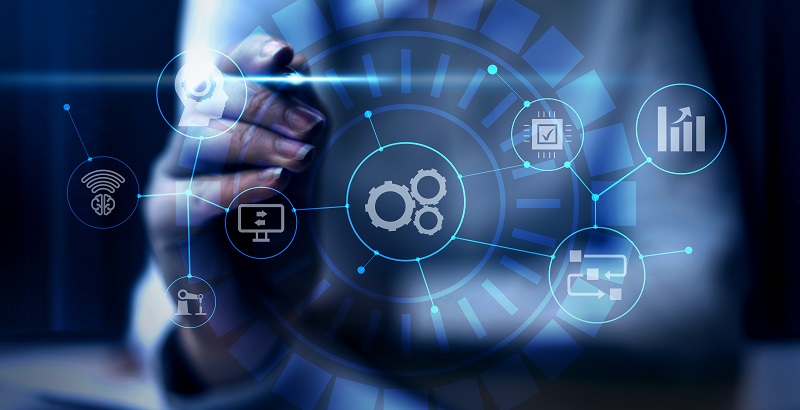In today’s fast-paced and technology-driven world, digital transformation has become a necessity for businesses to remain competitive. While technology plays a vital role in this process, the biggest challenge lies not in the tools themselves, but in the integration of these technologies. Moreover, recognizing the essential role of employees in Industry 4.0 and addressing their concerns and fears regarding automation are crucial for a successful transformation. This article delves into the significance of integration and employee empowerment in digital transformation, highlighting the importance of adapting and evolving old processes and exploring the potential of Industry 5.0.
The role of integration in digital transformation
Integrating new technologies seamlessly into existing systems and processes is the backbone of digital transformation. While technology advancements offer vast opportunities, the key lies in identifying ways to integrate these new tools effectively. The process often involves integrating new technologies with legacy systems and, more crucially, with employees. When businesses overlook employee integration, the transformation process becomes incomplete and ineffective.
Employees as the Key to Success in Industry 4.0
In the age of Industry 4.0, employees play a pivotal role in the success of digital transformation. Their ability to embrace and adopt new technologies determines the overall outcome. Ensuring that employees are equipped with the necessary skills and knowledge to leverage the latest tools is essential. Organizations must focus on training and upskilling programs to empower their workforce and promote their active participation in the digital transformation journey.
Intimidation faced by employees in Industry 4.0
The fast-paced advancement of automation and artificial intelligence can be highly intimidating for employees. The fear of losing their jobs or being replaced by machines often leads to resistance and hesitancy towards embracing new technologies. To address employee concerns, organizations must establish open channels of communication. Providing clear explanations of how automation can enhance their work, highlighting new job opportunities, and offering reassurance through retraining programs can mitigate intimidation and foster a supportive digital transformation environment.
Integrating new technologies with employees and legacy systems
Integration challenges arise when organizations attempt to use new technologies alongside outdated and inefficient processes. This mismatch often leads to friction and frustration, hindering the progress of digital transformation initiatives. To overcome these challenges, businesses must focus on aligning new technologies with employee workflows and incorporating them seamlessly into existing processes. Enabling employees to actively participate in the integration process ensures higher adoption rates and smoother implementation.
Adapting and Evolving Old Processes for Successful Integration
Successful integration requires adapting and evolving old processes to fully capitalize on the potential of new technologies. By analyzing existing workflows and identifying pain points, organizations can redesign processes to leverage the advantages offered by digital tools. This iterative approach to process improvement ensures that new technologies are not merely overlaid onto old processes, but are integrated harmoniously, enhancing efficiency and productivity across the board.
The impact of uneven integration on digital transformation
One of the most common reasons digital transformation strategies fall short is uneven integration. When only certain aspects of the organization embrace new technologies, disparities arise, leading to inconsistencies, delayed decision-making, and missed opportunities. To avoid these pitfalls, organizations must ensure a holistic and consistent approach to integration. This requires strong leadership, effective change management strategies, and continuous communication to create a unified vision for digital transformation.
The challenge of the metaverse for businesses
As technology continues to progress, the metaverse presents a new and significant challenge for businesses. The metaverse is a virtual reality space where people can interact with each other and digital objects. However, the metaverse represents a leap forward that many businesses find overwhelming and difficult to integrate into their existing operations. Bridging the gap between existing technologies and the metaverse requires careful planning, investment in infrastructure, and collaboration with industry experts. Organizations must strategize and adapt to this new frontier to stay relevant and reap the benefits it presents.
Introduction to Industry 5.0
Industry 5.0 represents the next phase of digital transformation, focusing on user-friendliness, accessibility, sustainability, and collaboration. This paradigm shift emphasizes the merging of human creativity and capabilities with technological advancements. In Industry 5.0, automation is not solely about replacing humans but about augmenting their abilities and creating harmonious man-machine collaboration. This inclusive approach promotes a more sustainable and efficient future of work.
In the journey towards digital transformation, integration and employee empowerment remain the keys to success. Businesses must recognize that technology alone is not enough to drive meaningful change. By integrating new technologies with employees and legacy systems, adapting old processes, and focusing on the human aspect, organizations can fully embrace digital transformation and achieve their desired outcomes. Furthermore, Industry 5.0 offers new possibilities for user-centric and collaborative approaches to work. As businesses navigate the ever-evolving landscape, it is crucial to prioritize people, leverage their potential, and empower them to be at the forefront of the digital revolution.

